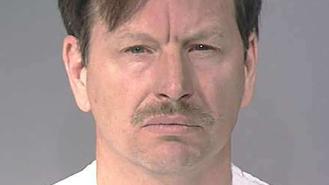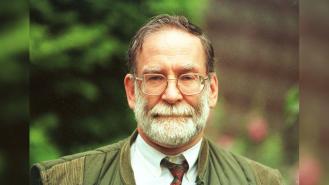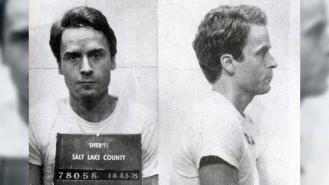
The hunt to identify Samuel Little's victims
Samuel Little who died in December 2020 was an American serial killer and serial rapist who carried out his crimes across the United States over the course of 35 years. While he was only convicted of eight murders between 1981 and 1994, he confessed to murdering at least 93 women across more than a dozen states. The FBI has conclusively linked Little to at least fifty murders, making him America’s most prolific serial killer.
Little was convicted in 2014 of three murders in California and sentenced to life imprisonment without the possibility of parole. Despite the fact he had been connected to the murders with DNA evidence, he continued to profess his innocence. The FBI’s Violent Criminal Apprehension Program (ViCAP) were called in to assist in the case and worked on a full background check on Little after it was theorised that he was involved in a spate of other unsolved murders. They sent out a national alert asking cold case detectives across the United States to check their files for similar murder cases to those which Little was accused. In doing so, they were able to find an alarming pattern, linking him to cold cases throughout the country.
In 2018, Little finally began to confess to a plethora of murders from 1970 to 2005. He had hoped that in exchange for his confession, he would be transferred to a quieter prison. Little confessed to over 93 murders during 650 hours of interviews. During these interviews, he was supplied with Dr. Pepper and pizza to keep him content. He confessed in such great detail that the FBI have announced that they believe that his confessions are credible, leading to a grim conclusion that Little is the most prolific serial killer in American history, surpassing Gary Ridgeway, Ted Bundy and John Wayne Gacy.
Little mostly targeted women who lived on the outskirts of society was working under the assumption that he would never be caught because nobody was accounting for his victims. 'They was broke and homeless and they walked right into my spider web…' he said in an interview with 60 Minutes. Speaking with investigators, he said that when he killed a woman, he would skip town for a while in a bid to avoid detection. Due to the victims being marginalised, a lot of the murders were attributed to accidents or overdoses. For example, Martha Cunningham was discovered bruised and nude from the waist down in the woods in Tennessee in 1975. Investigators initially ruled her death as natural causes before later reclassifying it was 'unknown.' While Little is already serving a life sentence in prison, the FBI believes that it is important to seek justice for each of his victims and to close as many cases as possible.
Little was able to recollect his victims and their murders in near-photographic detail. He would later provide intricate yet haunting drawings of his victims in paint and pencil, filling in their contours and the texture of their hair. He recalled the features of their faces, the colour of their eyes, what they wore, and even how they wore their hair. However, Little is much less reliable when it comes to recalling exact dates and timelines. With the detailed portraits, he recalls vague details such as: 'Tall girl by highway sign, Cincinnati, 1984 or 74.'
Little confessed to murders throughout the country, including Florida, Georgia, Louisiana, Maryland, Ohio, Tennessee, Texas, Illinois, Mississippi, Kentucky, Arkansas, California, Nevada, South Carolina and Arizona. He confessed to around 20 murders in Los Angeles alone and said in addition to California, his biggest concentrations of murders were in Florida. Crimes that are scattered across several states can often lead to a lapse in communication between jurisdictions and this aided Little in remaining undetected for so long.
The FBI have asked the public’s assistance in matching the remaining unconfirmed confessions with either missing person cases or unsolved murder cases. They have taken the unusual step of publicly releasing thirty portraits of Little’s victims which cannot be identified. These haunting portraits are mostly of black women. In addition to these portraits, the FBI have also released chilling videos of Little detailing the murders of some of the women.
In one video, he described the murder of a woman he drowned in New Orleans in 1982. He said: 'She was pretty. Light coloured, honey brown skin. She was tall for a woman. Beautiful shape. And uh, friendly.' Little also confessed to murdering an 18 or 19-year-old transgender woman named Marianne who he met in a Tampa bar in 1972. During the video recording, he described Marianne as good-looking, around 140 pounds and about 5 feet 6 inches tall. He described how he drove Marianne back to her apartment where her roommate asked them to buy shaving cream. 'This opportunity popped up,' Little said as a smile crept across his face. He explained he drove Marianne out to the Everglades instead and strangled her.
Little also told investigators about a 25-year-old woman he met in summer of 1984 while driving from Lorain, Ohio, to Cincinnati. The woman was standing outside a strip club in Columbus, Kentucky, when she asked Little for a lift to Miami where she said that her mother lived. He described the woman as being between 130 to 170 pounds and about 5 feet 6 inches or 5 feet 7 inches tall. He also relayed how in 1993, he was driving a yellow 1978 Cadillac Eldorado to Los Angeles when he passed through Las Vegas. Here, he met a thin, dark-skinned black woman he estimated to be around 40-years-old and 110 to 120 pounds. He told investigators: 'She’s out there hustling. I think she was a drug addict because she wouldn’t been out there.' He said that he also met the woman’s son and that he shook his hand. Later that night, he took the woman to a motel room and strangled her before rolling her body down a slope of a desolate road: 'I heard a secondary road noise and that meant that she was still rolling.'
In another video, Little spoke about a black transient woman he met in Little Rock at some point between 1992 and 1994. He estimated that she was around 24-years-old and said that it may have been snowing when they met. He said to investigators: 'Oh man, I loved her. I forget her name… oh wait, I think it was Ruth. She was a heavy set, big old yellow gal. And had buck teeth. Had a gap between her teeth. That’s what it was… And she was, she was light… honey-coloured skin.' He went on to say that he met her at a 'crack house' and stayed with her for around three days before strangling her to death. He informed investigators that while with Ruth, they had shoplifted in Kroger and he got arrested. According to police records, Little was arrested in Little Rock on the 20th of April, 1994, for shoplifting in Kroger.
Investigators who spoke with The New York Times told them that as Little recounted the murders, he became more animated and even chuckled. During one confession, he placed his hands together and said: 'I knew she was mine.' In another, he disturbingly stated: 'She was fighting for her life, and I’m fighting for my pleasure.' Investigators working on the case said that Little also showed no remorse for his actions: 'He said God made him this way, so why should he ask for forgiveness? He said God knew everything he did,' stated Sgt. Crystal LeBlanc of the Opelousas Police Department.
The FBI is still trying to piece together the confessions with unidentified persons and unsolved cases from the past four decades. The portraits and videos can be viewed here.








